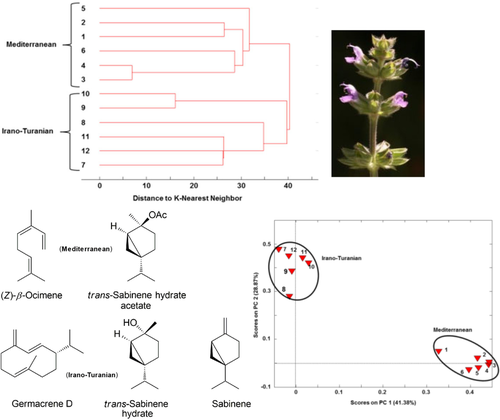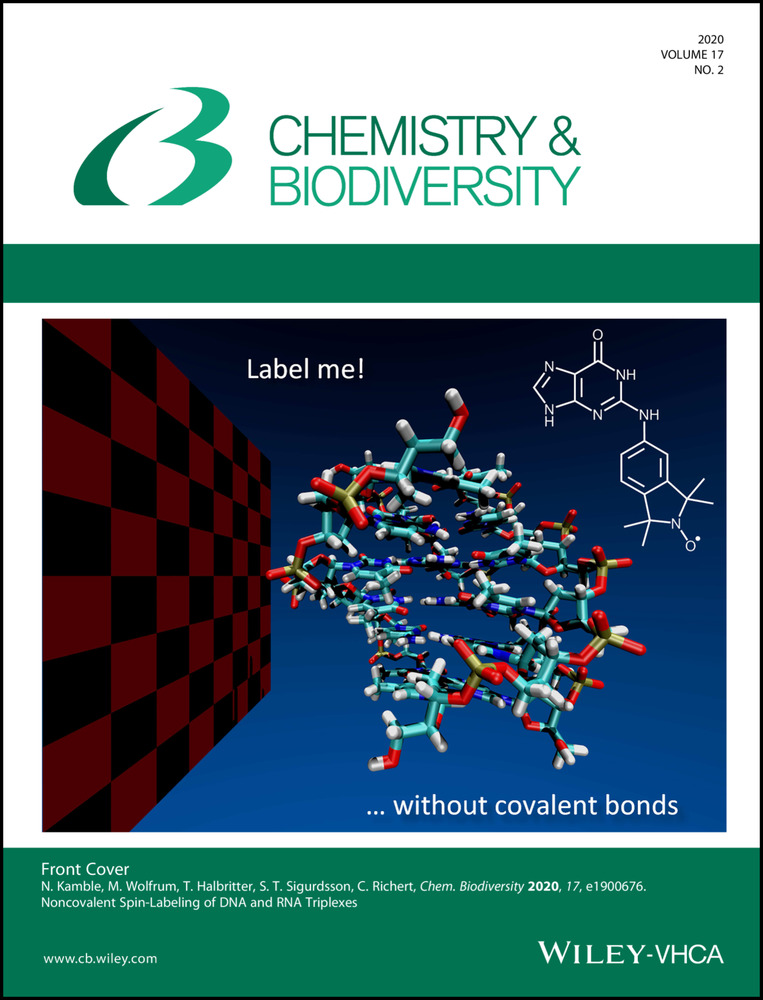Aroma Profile of Two Populations of Salvia verbenaca Collected from Two Bio-Geographical Zones from Jordan
Abstract
The aroma emitted from the different organs of two Salvia verbenaca L. populations from Jordan were extracted by Solid Phase Micro-Extraction (SPME) and then analyzed by GC/MS. The emission profile of the stem, leaf and sepal samples from the Mediterranean zone (Al-Salt) was dominated by monoterpene hydrocarbons (68.0 %, 33.7 %, and 42.2 %, respectively). The emission profile of flowering parts including pre-flowering buds, fully expanded flowers and petals was dominated by oxygenated monoterpenes (58.6 %, 59.3 % and 87.1 %, respectively). The major constituent detected in these organs was trans-sabinene hydrate acetate (range 14.5 %–87.0 %). On the other hand, samples collected from Irano-Turanian zone showed different emission patterns. While the stems, leaves and petal emissions were dominated by sesquiterpene hydrocarbons (54.9 %, 76.8 % and 52.6 %, respectively), monoterpene hydrocarbons dominated the emission profiles of the pre-flowering buds (75.1 %) and fully expanded flowers (73.6 %). Petals emissions were characterized by high concentrations of oxygenated monoterpenes (58.8 %). Notably, trans-sabinene hydrate dominated most organs emissions except for leaves (range 20.0 %–58.8 %). Principle Component Analysis (PCA) and Cluster Analysis (CA) revealed two different clusters related to the two different geographical zones. The current investigation revealed two ecotypes of S. verbenaca that could result in two different chemotypes. Trans-sabinene hydrate acetate and trans-sabinene hydrate are suggested compounds for identifying these two chemotypes.





